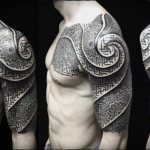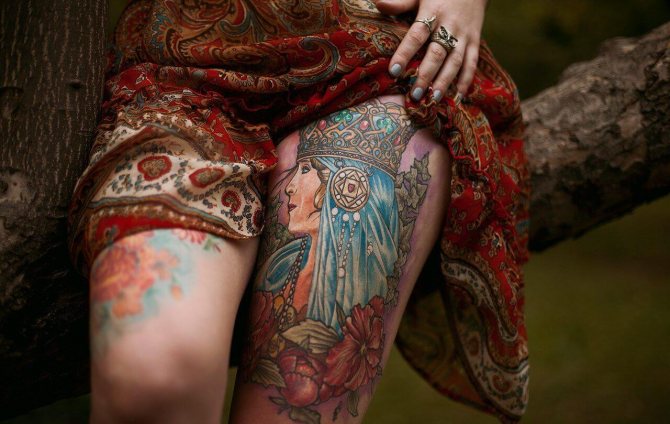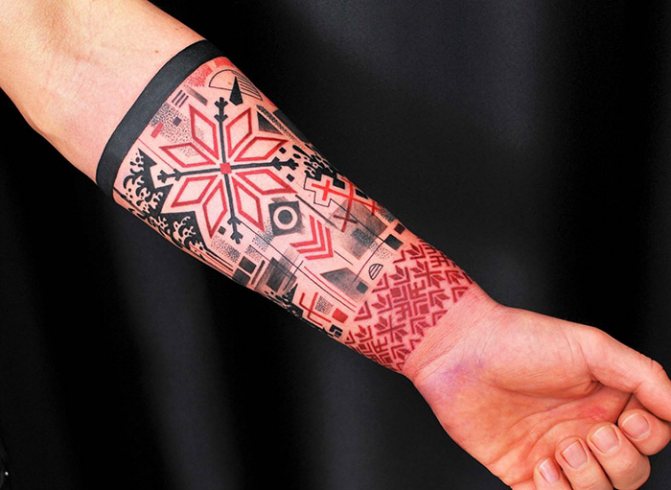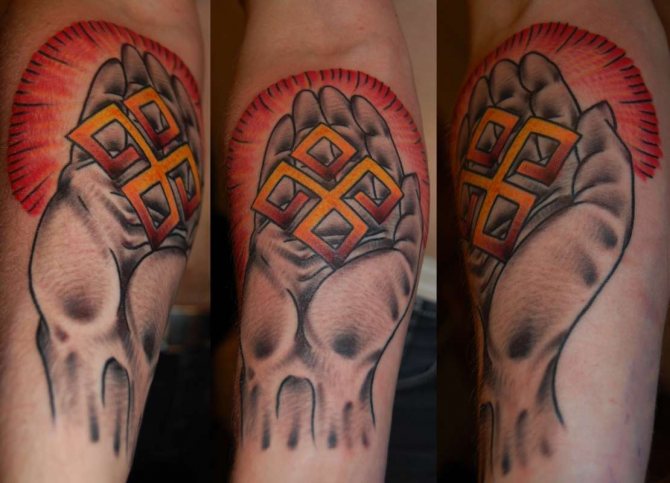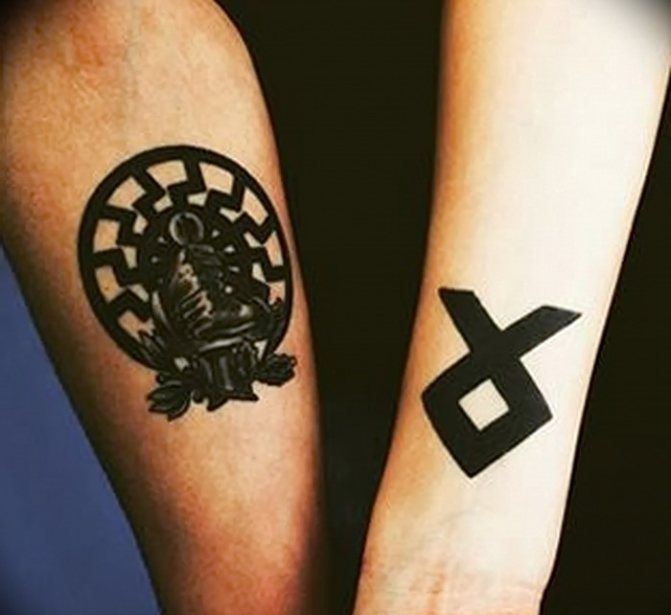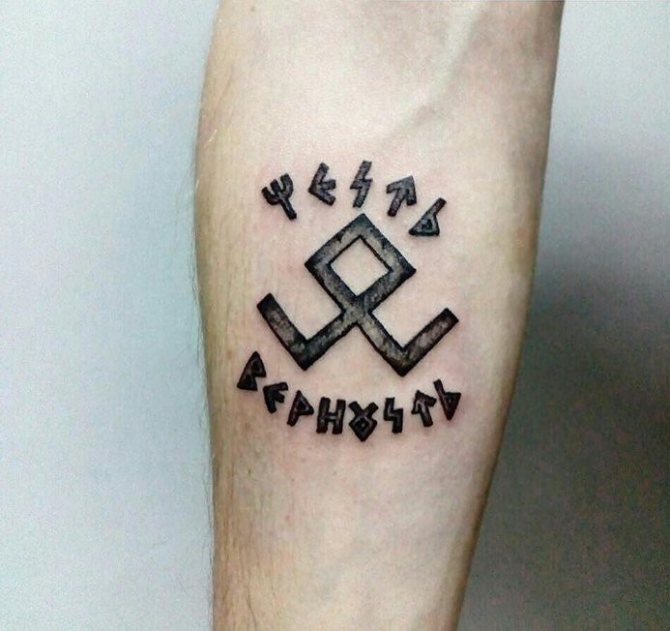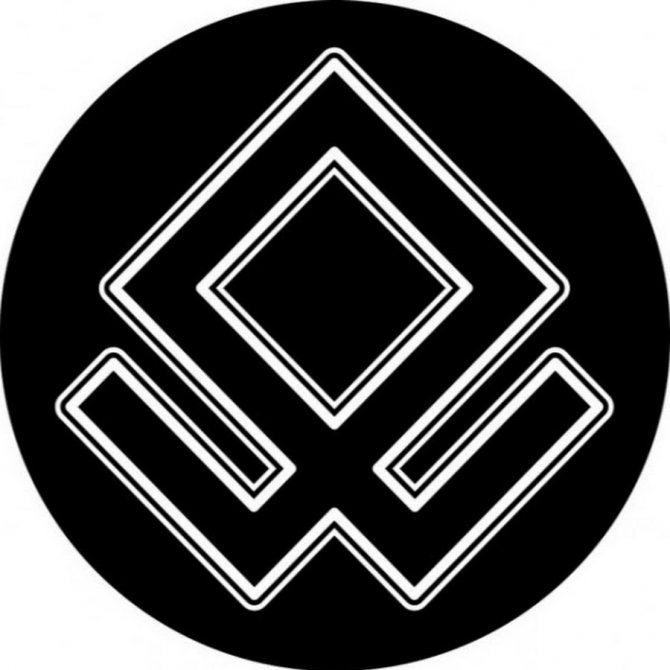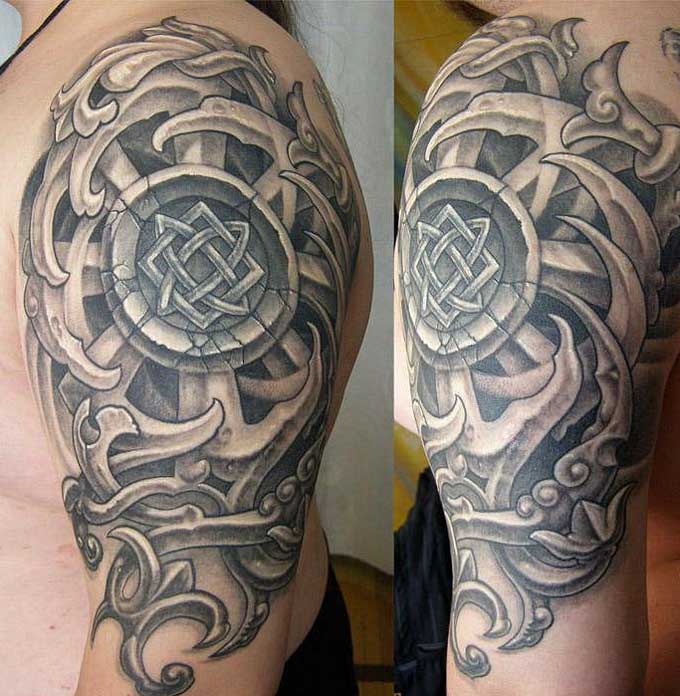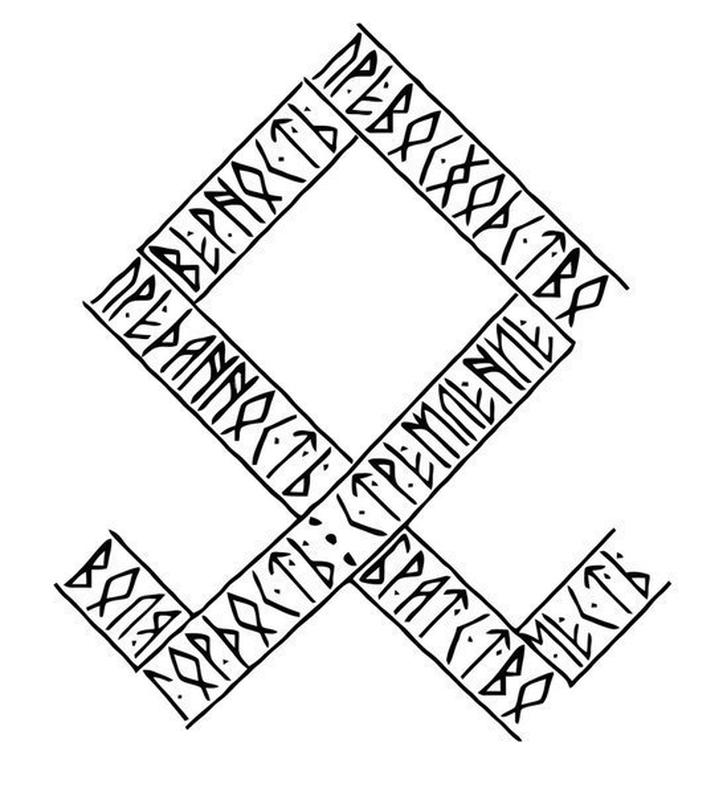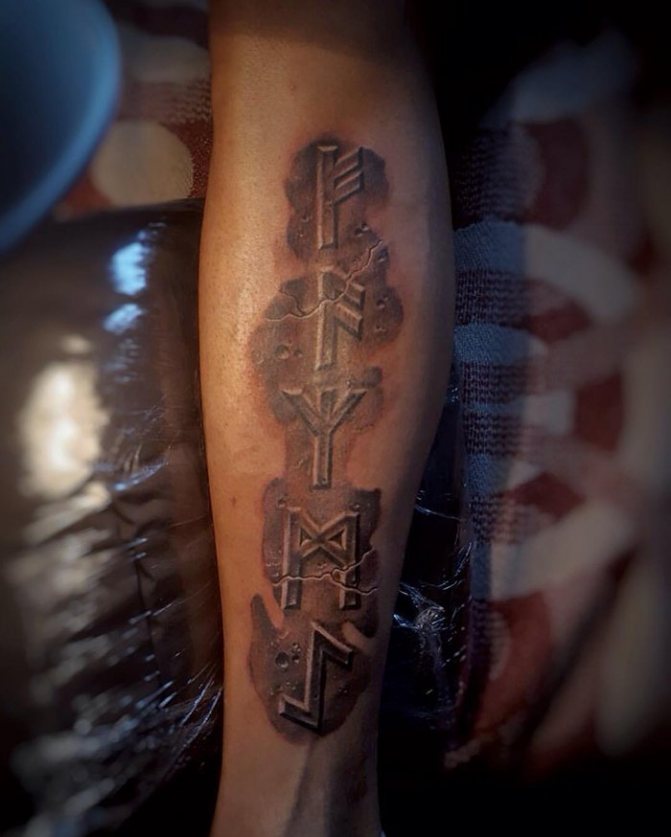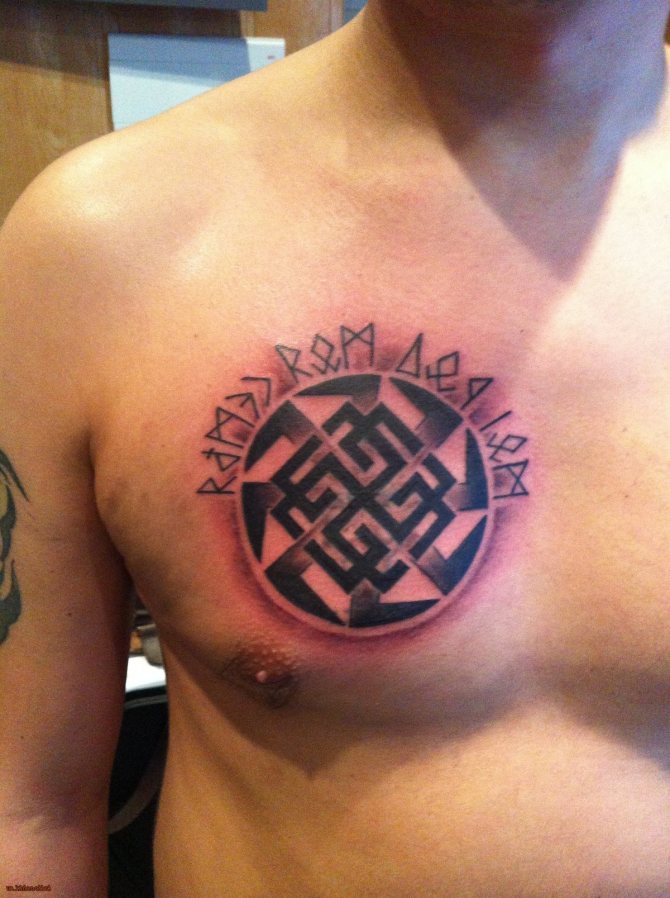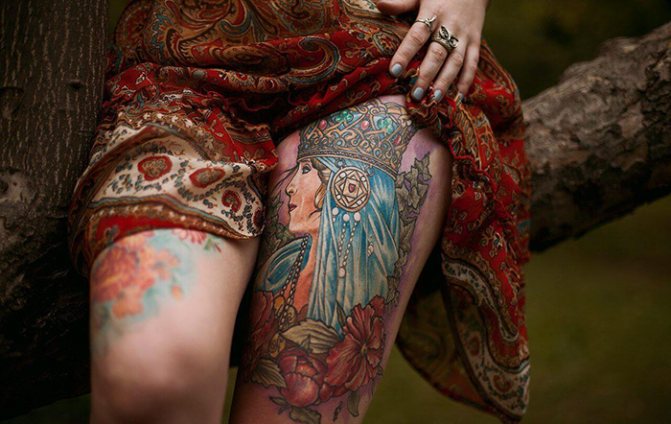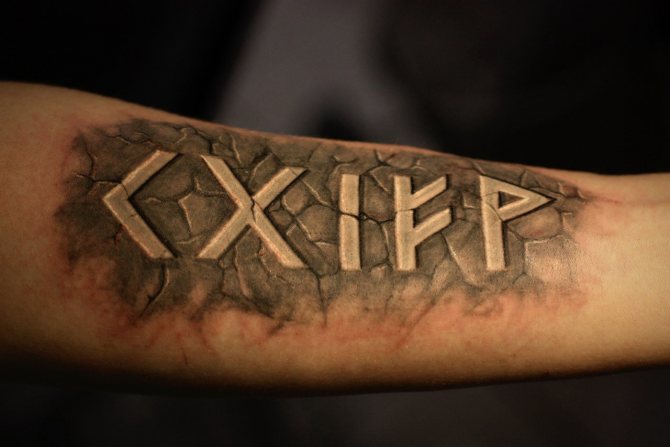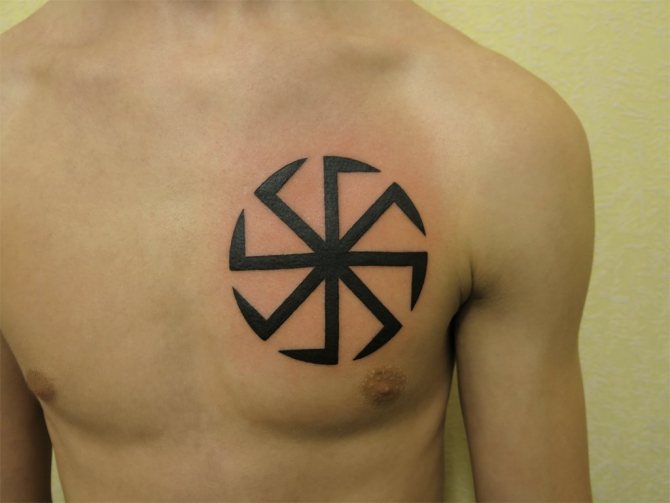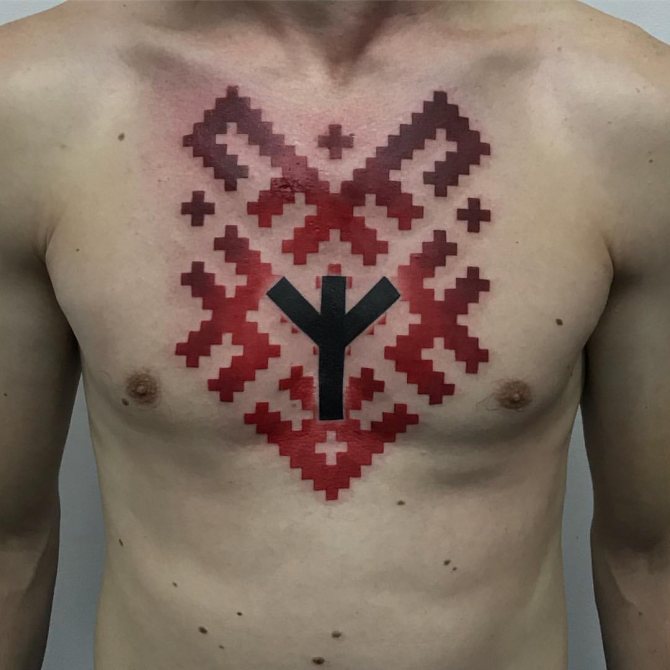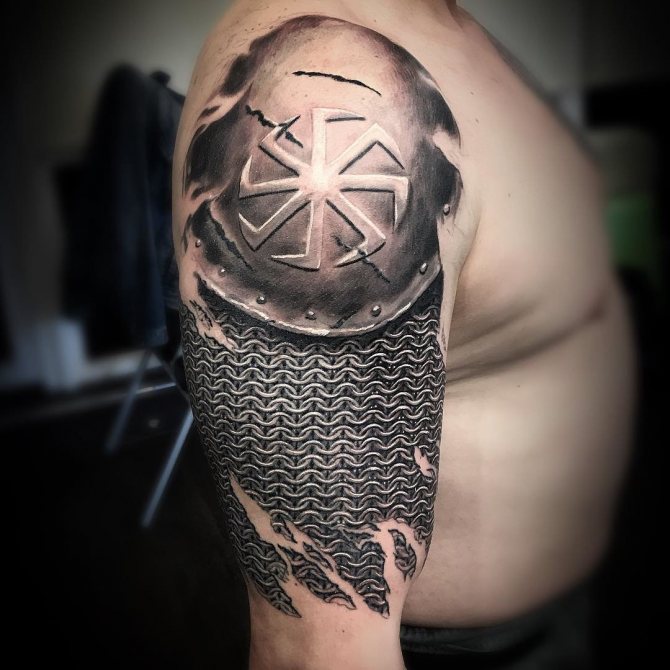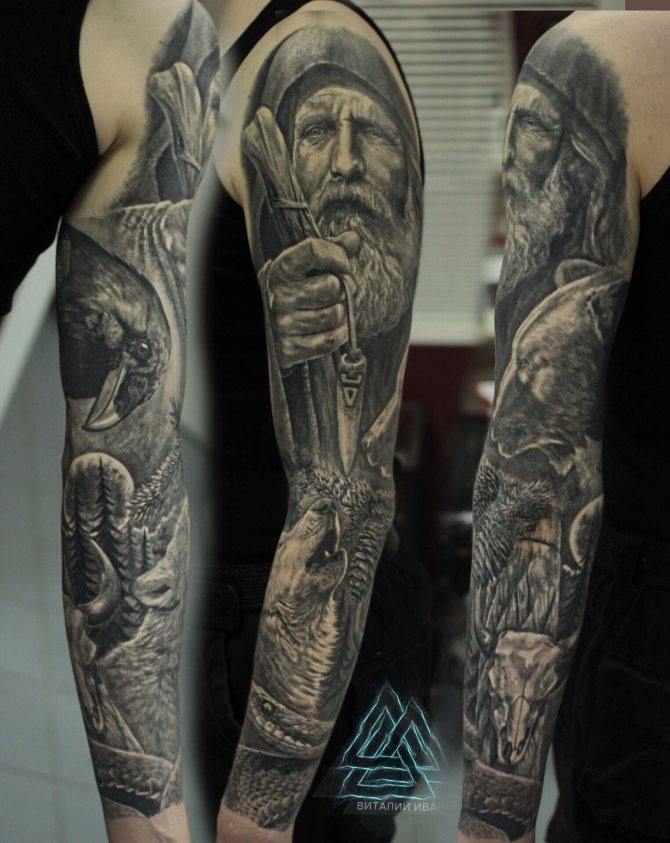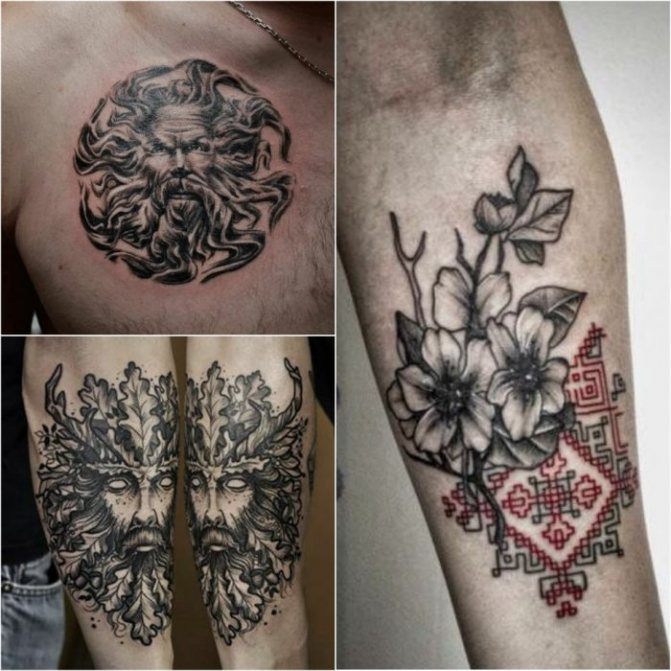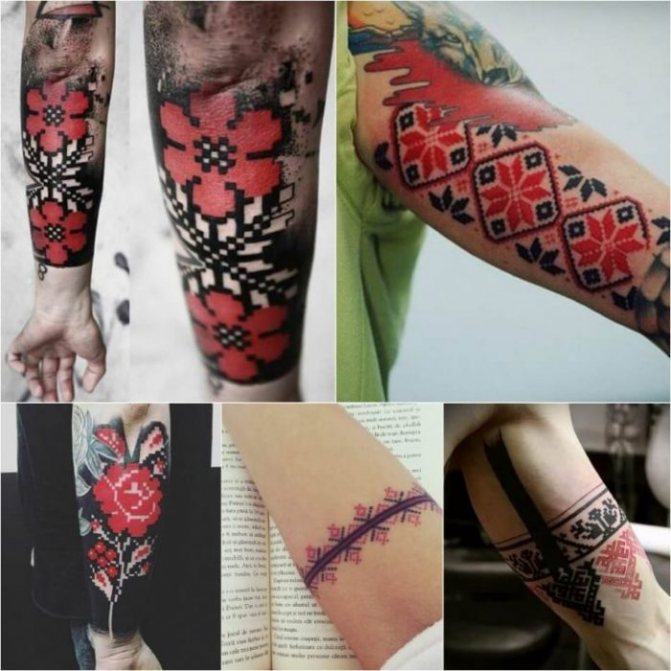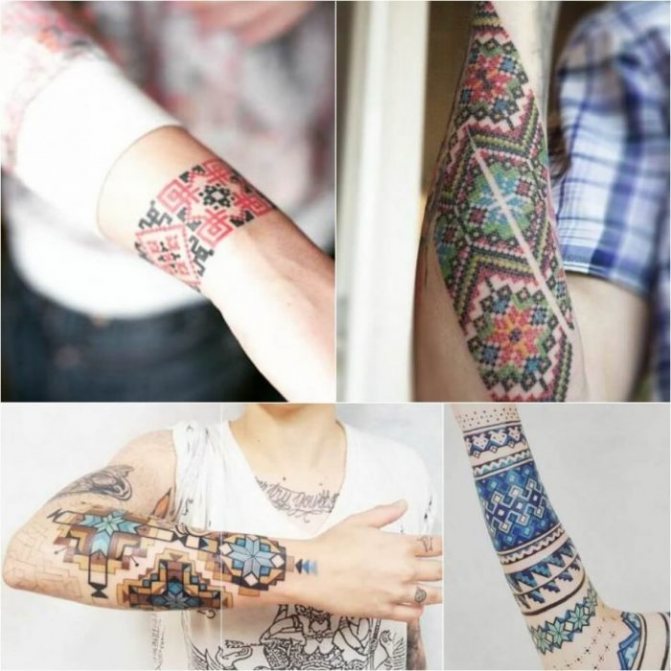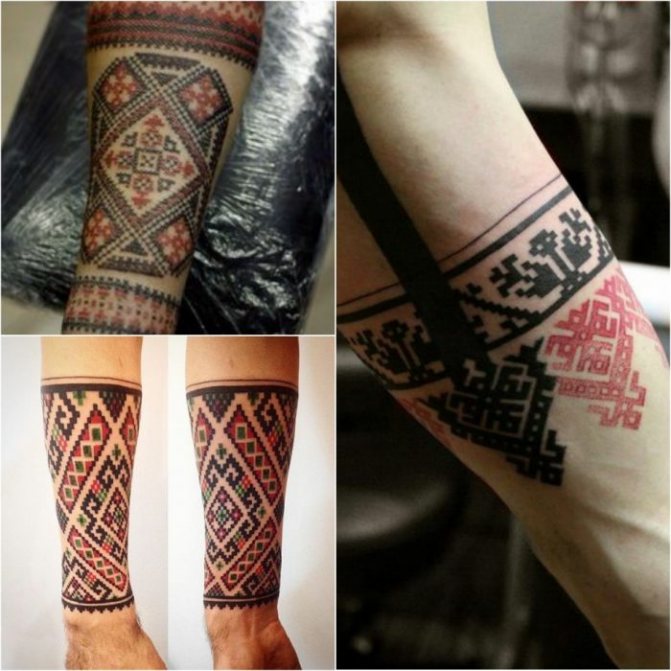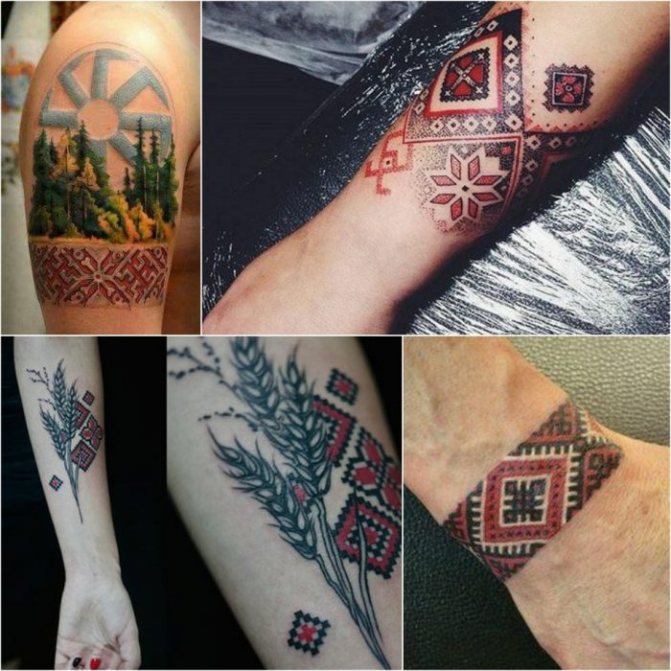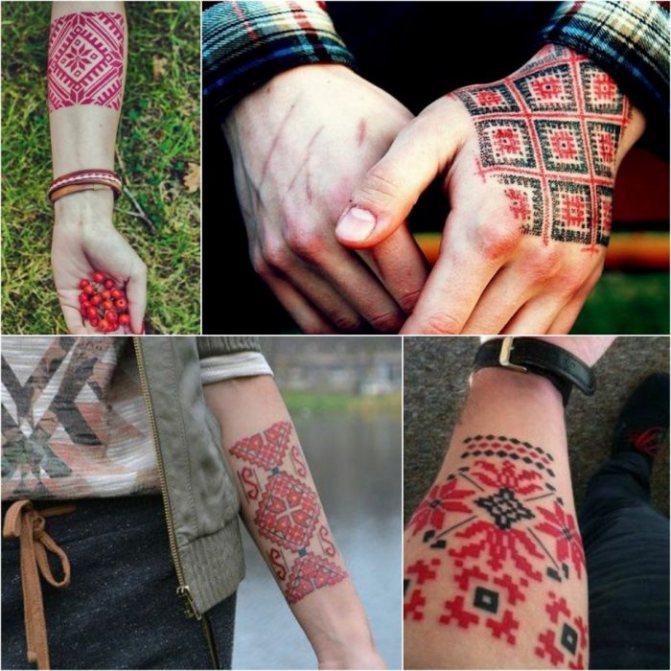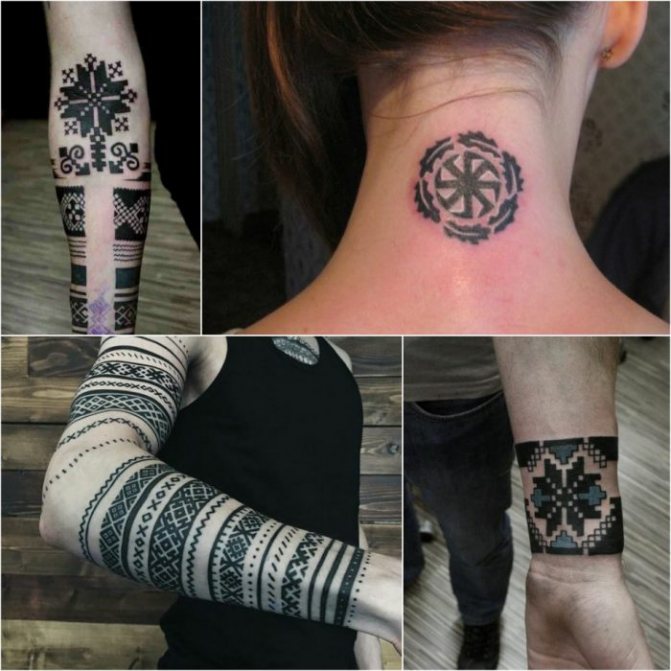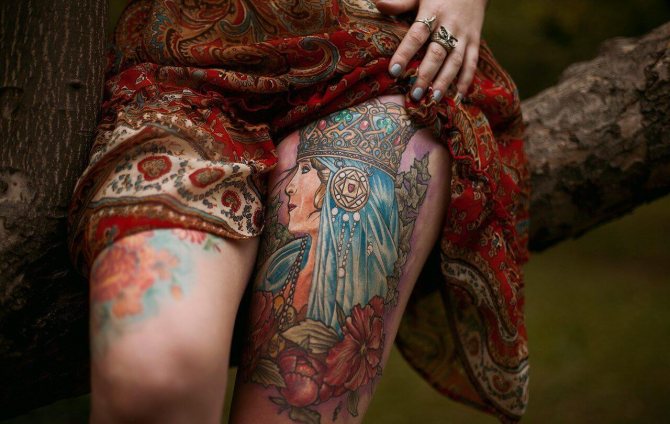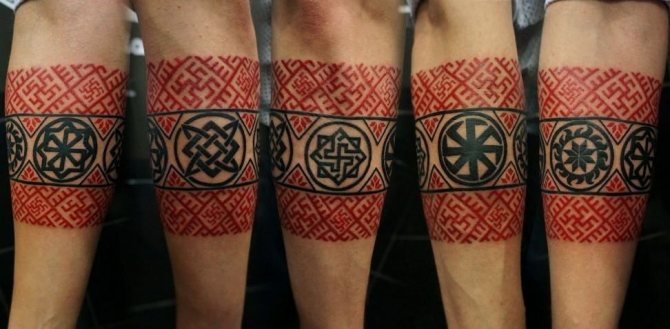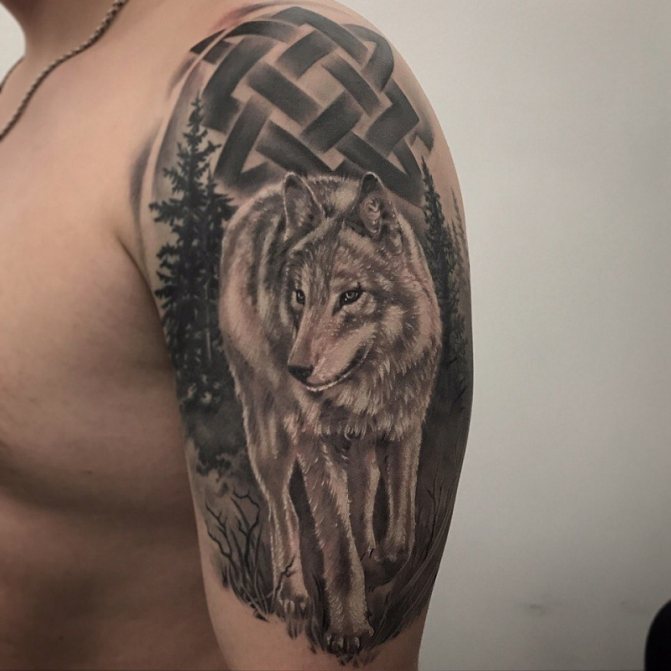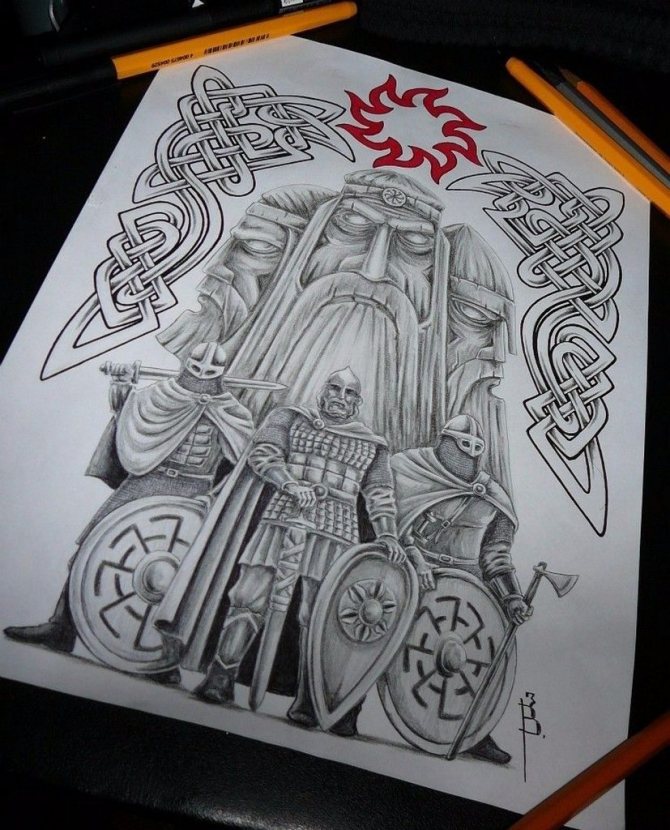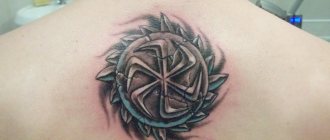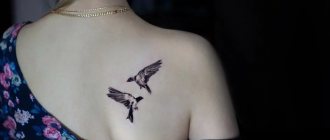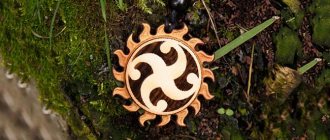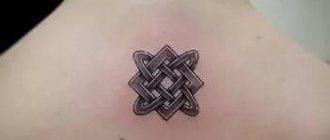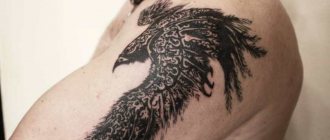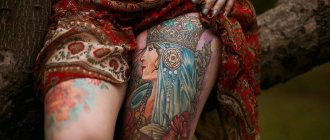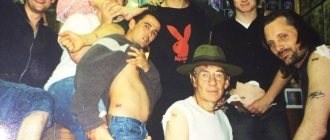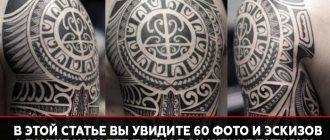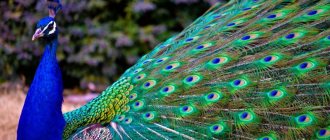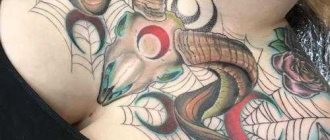In recent years more and more often become common Slavic tattoos. They have an unusual appearance, they have a special meaning and even unique power, which they give to their owner. If we talk about the most popular and frequently encountered symbols, these are the sign of fertility and the sign of prosperity. In the 11th century Slavic tattoos for men became more diverse as they began to use Catholic symbols.
Slavic Tattoos with Images of the Gods
The Slavs had a a large pantheon of godsThat was close to the Scandinavian pantheon. The Slavic and Viking cultures were constantly intertwined and influenced each other while maintaining their uniqueness.
- Perun - the supreme god, thunderer, lord of warriors, the prince and his retinue.
- Mother Earth - An image of nature, mother, nurse. The ancient peoples revered the earth, respected it, and treated it with reverence.
- Dazhbog - God of the sun, light, change of seasons, fertility.
- Veles - Lord of the economy, wealth and prosperity. Veles was second in reverence after Perun.
- Svarog - smith-god, lord of fire.
Swastika tattoo
One of the most common tattoos on ancient Slavic themes were Slavic swastikas of different angularity and shapes. This ornament is often confused with the swastika of Nazi Germany, which also borrowed from ancient peoples, so there is no need to compare such things. The tattoo of the Slavic themes is depicted as a cult sign of the cross with bent clockwise ends, denoting changes subject to the laws of nature, changes in the environment - the alternation of night and day, the seasons.
The Old Believers conceptualized the world around as an uninterrupted cycle in which life gradually goes to ruin and then is reborn again into new life. The Slavic cult swastika is usually depicted with at least three clockwise bends (there may be more bends).
The swastika symbolized the correct order of things in natureNamely, health and strength, the sun, light and joy. Also Slavic Old Believers applied tattoos as amulets. The most powerful amulets on the body were considered images of Ladinets, stars, Thunderwheel and caroler.
Slavic Tattoo Oberagi for Men and Women
In the olden days people were very dependent on the circumstances around them, so they had were in dire need to protect themselves and their home With the help of amulets. Each ornament and pattern had a special meaning, which had a protective function.
For example, embroidery on the shirt saved from the arrows of the enemy, and embroidery on towels and tablecloths brought wealth to the house and drove away evil guests. Dolls with symbols in Slavs guarded the sleep of children, and rune amulets Protected livestock and the economy from fires and disease.
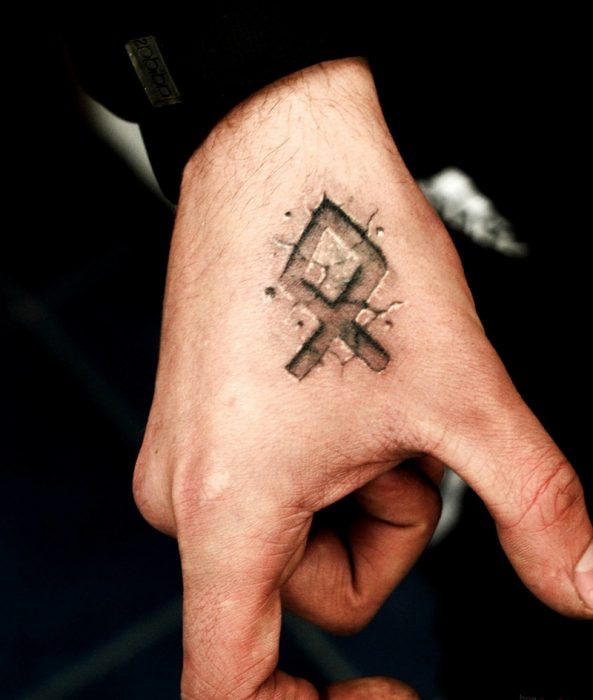
- The red color - symbol of life and love.
- Blue - Color of men, strength, protection from the elements.
- Black - The earth, fertility.
- Green is the color of. - symbol of nature, protection from wounds, healing.
Slavic Tattoo Runes.
A separate group of Slavic amulets - runes. Each sign carries a powerful protection and assistance to its owner.
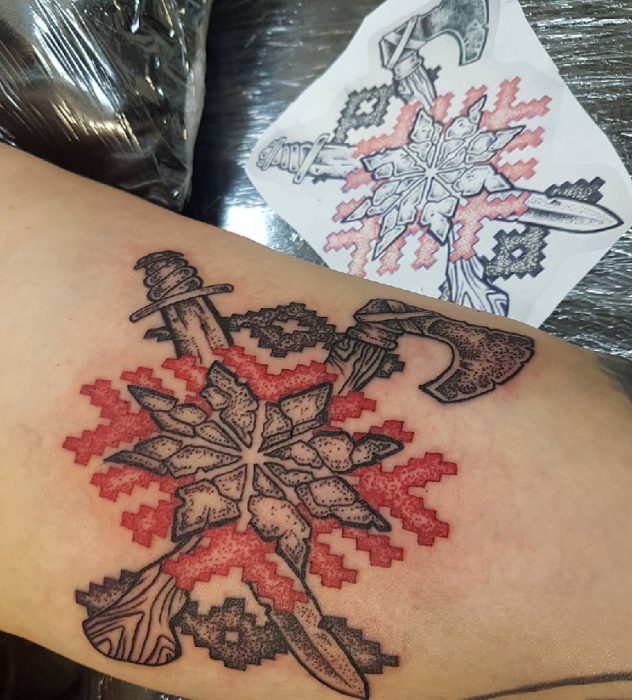

Tattoos Inspired by Slavic Plots
Sometimes Slavic tattoos use ornaments and portrait plotswhich symbolize: the old times, a person's love for history and their roots.
For many people, tattoos dedicated to a historical theme help them seek answers to life's questions, build relationships in the family and study antiquity.
Slavic fantasy world in the paintings of Vsevolod Borisovich Ivanov
"The sanctuary of Nychalbog" Processions of local Russians move toward the temple of Nychalbog. The fence is decorated with poles with images of zodiacal signs. At the top of the tower the priest of the deity holds in his right hand a sacred disk with writing. His left hand grips firmly the hilt of his sword. A gilded disc of a calendar is fixed to the top of the tower structure. The ancient Rus had the numerog who was in charge of the passage of time, which was divided into many different segments: both huge eras and epochs, and months and days. "Beloyar (March)" Beloyar is the ancient name of the month of March - in honor of the great ruler of the Rus Ancient Busa Beloyar. The month Beloyar marked the beginning of the year, the time of awakening of nature from the clinging embrace of winter. Later, when the image of Busa Beloyar was erased from people's memory, this month sounded in the mouths of Russians as "berezen" or "berezol". The picture reflects the time close to the change of the Heavenly Chambers. There are thawed patches on the river. To the right stands the temple dedicated to Busu Beloyar.
"Long awaited meeting" Evening mood reigns in the nature. The setting sun warms the rays of the autumn foliage of the trees, gently resting on the warm timbers of the mansion. In the lower part of the painting we see a warrior returning from a patrol or a campaign, having a conversation with his betrothed. In the lower right corner is a statue of God, illuminated by the rays of the sun. Where and when could this have taken place? Perhaps it is ancient Artania or Ruskolan. Or maybe it is the Valdai region of the times of the same ancient, bylinic city of Slovensk.
"Tsveten (April)" This month is under the patronage of Lada, the divine shepherd and Lada's chosen one, Lel. Two signs reign supreme in April. In the second half of the month, Taurus replaces Aries. The painting depicts late April, when the trees are covered in early greenery. There are two zodiac signs in the sky: Z is Aries, U is Taurus. The 3nak on the roof of the gate means the symbol of the entrance to Prava, the embodiment of development and the future. The faces of Aries and Taurus can be read in the pattern of trees and foliage.
"Stargate" It was the time of night. The full moon has risen over the surrounding forests, and its light is reflected on the water surface of the river. A young rusich walks along the shore. His companion is a tame bear. It is not far to the nearest village. But suddenly the night sky lit up and a truly wonderful sight appeared before the eyes of witnesses. The gates of space opened and creatures from the distant universe appeared on Earth. They resembled magical birds and radiated a bright golden light.
"The legendary, but no less historical image of Prince Rus is known from many Russian legends and chronicles. The brother of the same legendary Slovene, he founded the oldest Russian town not far from the place where the district center of Staraya Russa stands today. It is also known from the legends that the prince had a "heavenly chariot" on which Rus performed flights. It is likely that this outlandish aeroplane was created in the times of the high technology of the Hyperborean before the Flood. A string of millennia later, Prince Pycy inherited it.
"Apparition of a Tailed Star" A tailed star (comet) appeared in the evening sky. The appearance of the tailed star is an unusual event for the people of the ancient city of Slovensk. They walk solemnly and observe the sky. The sun is out, but its circle is no longer visible. It is obscured by the temple depicted in the lower right part of the picture. The rays of the sunset, however, like arrows, pierce the evening haze. What does the tailed marvel portend? The townspeople talk to each other about it, and the Magi will give the exact answer.
"Temple of Sventovid in Arkona" ...at the beginning of the second millennium, many lands of Baltic Russia were conquered by the Germans. So Lipetsk, Drozdiany, Berloga, Pereslavl, Branniy Bor, etc. became the cities of Leipzig, Dresden, Berlin, Breslau (Wroclaw), Brandenburg. There remained the last piece of Slavic land - the city of Arkona. On the square of Arkona stood a large wooden temple dedicated to Sventovitus. The picture depicts one of the many festive rites in honor of the Great God.
"In the City of Prince Yasher" The setting sun illuminates the mysterious Russian city with orange-golden light. The idol of Rod, covered with thin golden plates, sparkles in the rays of the setting sun. In the center of the idol of Rod there is a three-petal self-faceted crystal made of rock crystal. A tremendous life force is contained in this stone. It has the ability to change colors in response to changes in the weather and the thoughts of the people near it.
"Sanctuary of the God of Justice" The sanctuary of the God of Justice is depicted. The priest of the temple is having an invisible conversation with the idol of the deity of the Western Slavs. Slightly further away are the chiefs and elders. In the distance the other members of the strong tribe are watching the ceremony. Apparently, some important issue is being decided, since they turned to the chief priest of the sanctuary for advice. Perhaps it is a question of war and peace. Or a dispute between kinsmen, which must, as always, be resolved peacefully.
"Perun's Arrival on Earth" "Four thousand years ago the cosmic chariot of the God Perun swiftly rolled across the heavenly dome of the Earth." So the ancient legends say. The Russians joyfully welcomed the arrival of their deity. Clan unions sacredly honor and carry out all precepts of Perun, in which the power and wisdom of the Great Cosmos is concluded. Perhaps the glade with the sanctuary of God is in the land of Slovenia, near Ilmen Lake... The Great Perun will soon leave the earth for the next four thousand years.
"Anxious times" In the ninth and tenth centuries Persian and Arabian travelers and scholars knew three Russian civilizations - the Kiev, Novgorod and Artania. The capital of Artania was located on the site of the modern city of Tomsk, on the banks of the river Dark (Tomi). The Russians guarded the borders of their lands vigilantly. There were many ways to get uninvited "guests" into the perilous and impassable forests and swamps. The picture shows a signal post. Two warriors, looking sharp in the direction of the distant pass, where the enemies appeared.
"Traces of the Past" Once upon a time there was a sacred grove of Slavs near the coast of the Varangian Sea. An idol of one of the Vedic Gods was erected right on the shore, serving as a beacon for passing ships. As time went on. In the XI-XII centuries, the enemies took over this region. The grove was cut down, the idol was overthrown. Gradually it was covered with a layer of earth and overgrown with moss, hiding under a green blanket from prying eyes. High in the sky shine runes - the hidden sign of the forsaken God.
"Chernobog" This god of the Slavs was the opposite of the White God - Belbog. Chernobog was worshipped as an evil deity. As night opposes day, as cold opposes heat, so evil has as its adversary good. This is how the balance is maintained in our world. But the absolute triumph of Chernobog on Earth is impossible, as is the complete domination of Belbog.
"Belbog and Chernobog" Two riders ride, each on his own path. the two gods are Belbog and Chernobog. The first God was portrayed as a wise gray-bearded old man, the second as the personification of evil. But Russians worshipped them equally. They are inseparable from one another as day from night, light from darkness, etc. These gods eternally watch over man and record his deeds in special books. The good are "recorded" by Belbog, the evil by Chernobog. However, man has a free choice which path to follow.
"In Kashchei's Throne" The immortal servant of Navi looks intently at the golden needle visible through the shell of the duck's egg. In the chest among the jewels is a golden duck. The needle contains the eternal life of Kashchei. On the wall of a massive log cabin hangs a map of the prehistoric world. Clearly visible is the island of Poseidon, where Kashchei was one of the chief servants of Chernobog. Now the servant of Navi dwells somewhere in the depths of the Siberian taiga.
"The Master of the Lake. The Mystery of Lake Brosno" In the west of the Tver region there is a deep lake Brosno. An old legend tells of a Varangian leader who, crossing the waters of the Brosno by boat, was killed by a huge monster. In the 30s of the twentieth century, the surrounding inhabitants managed to catch the Brásno monster. The unseen skin was for a long time displayed in the yard of a house, but it never interested the scientific community. According to what is known, it was a huge reptile, resembling a plesiosaur or pliosaur.
"Once upon a time a heavenly chariot, engulfed in flames, made an emergency landing on Earth. Many thousands of years have passed. The hardened hulk of the once flying miracle could not be destroyed by the abyss of the past centuries. However for our forefathers Proto-Slavs, the starship is not a miracle. Their civilization is still far from the great achievements of ancient eras, but these people live a happy life, as part of the world around them. Looking at the mysterious celestial alien, they understand that for the development of the spirit the way to the unrestrained development of technology is not always acceptable.
Slavyansike Tattoos - Tattoo of the Kolovrat
The Kolovrat is one of the most basic symbols Slavic tradition.. It is a symbol of the wheel of the year, the sun, the change of winter and summer, the eternal cycle of life. In modern culture, the rotunda can have different interpretations: someone uses this ancient symbol in their own interests, but historically the rotunda has no negative connotations.
Slavic Tattoo Sketches for Men and Women
Slavic tattoos can not be strictly divided into female and male. The same Slavic tattoo can be done by both men and women.
Averters for family, wealth, health and so on, also, do not have a gender identity. In the ornaments The traditional male color is blue, and the color of women - red.
On what places tattoos with this subject are applied
Before applying the Slavic tattoo, it is recommended to study the sketch in detail. This is especially important if in the future the tattoo is planned to be supplemented with new elements.
How to choose a sketch in relation to the place on the body
Tattoos with a complex composition can take up a lot of space - the most ambitious are better depicted on the back. Celtic ornaments or "animal style" patterns look spectacular on the arm or shoulder girdle. On the chest looks good paired plot, such as two solar signs.
Higher Knowledge: The application of runes on the body, their value and strength, where should apply
Compound options can occupy the chest, arm and shoulder at once. For example, the face of a deity and the symbol of the sun fit into the overall composition, being united through ornamentation.
Separate images of gods, people, animals or weapons are more often drawn on the hand. They can be complemented by a pattern that fills the entire forearm - forming a continuous tattooed surface, called a "sleeve".
Slavic runic tattoo inscriptions are applied to the forearm or wrist, forming a kind of bracelet. They can also be a circular frame for a compass or a sun sign. The foot is considered the least suitable place for Slavic tattoos.


Popular styles and colors
Tattoo in Slavic stylistics can be conditionally divided into several ways of execution:
- Tribal - stylization under the "primitive" body art. The figure fully occupies part of the body surface, and the key role is played by the ornament that creates a single "fabric" of the composition.
- Realistic - artistic portraits of gods, warriors or animals with high detail.
- Minimalistic - laconic image, the number of features and details is limited. Applicable for small and medium sized tattoos.
- Black is the most sought after color by artists and their clients. Red or blue elements may be introduced for contrast. Green color more often finds application in images of wildlife, complementing the main drawing.
Symbols with which a tattoo in the Slavic style can be combined.
In terms of combining different Slavic tattoos, it is important to adhere to stylistic unity. Slavic motifs go well with a background in the form of flowers or plants, "animal" ornaments, trees or burning flames. Adding elements from non-European cultural traditions - Indian patterns, Vedic signs and hieroglyphs - would be an unfortunate option.
TattooSlavic runic tattoos - examples with photos, their meanings and tips on the choice
